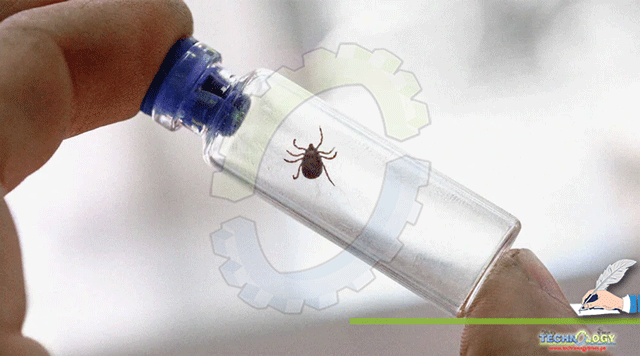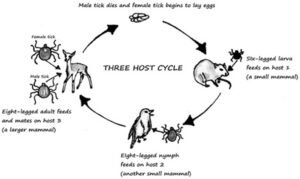Powassan Virus—A Novel Reemerging Tick-Borne Disease

Powassan virus infection spread through infected tick bites. More Powassan virus infections have been documented in recent years, even though they’re still uncommon. Powassan virus infection has no vaccinations or treatments available. By avoiding ticks, you can lower your chance of contracting the Powassan virus.
EPIDMOLOGY:
Tick-borne diseases are a major public health concern from the Great Lakes region of the mid-eastern United States to the sub-Saharan desserts of Africa. A vast variety of clinical diseases caused by protozoal, bacterial, or viral agents are transmitted by ticks. In Powassan, Ontario, POWV was first noted in 1958. In addition to instances being documented in Far-Eastern Russia, Powassan is endemic throughout the northeast and upper midwest of the United States. Due to the illness’s unpredictable duration and diverse clinical appearance, Powassan presents a diagnostic difficulty similar to other tick-borne infections. Sadly, there aren’t enough diagnostic tools to match the aggressiveness, severity, and genetic complexity of the illness.
TRANSMISSION:
People can contract the Powassan virus from infected tick bites. When ticks consume groundhogs, squirrels, mice, or other rodents that have the virus in their blood, they become infected. By biting humans and other animals, infected ticks can then transmit the Powassan virus to them. The virus does not build up in people’s blood at levels high enough to infect biting ticks. People are therefore regarded as “dead-end” hosts for the Powassan virus.
- Transmission time: Tick attachment to the host happens after successful “questing” Compared to other tick-borne diseases, Powassan has a much shorter transmission time, as infection can occur 15 min after tick attachment. During the attachment, tick saliva serves as a local anesthetic to the skin and facilitates viral transmission structure.
The virus cannot spread from person to person ,except, in extremely rare circumstances when blood transfusions are used. People who recently received a diagnosis of Powassan virus infection should wait 120 days before donating blood or bone marrow because the virus can spread through blood.
The groundhog tick and the squirrel tick rarely bite people. The blacklegged, or deer tick, which feeds mainly on white-footed mice and deer, often bites people. These bites can result in several types of diseases (e.g., Lyme disease).
Ticks may attach to any region of the body, although they are frequently found in places that are difficult to notice, such the scalp, armpits, and groin.

SYMPTOMS:
Many Powassan virus carriers do not exhibit any symptoms. When a tick bites a person, it can take anywhere between a week and a month before they start to feel unwell.
- Initial symptoms can include fever, headache, vomiting, and weakness.
- Powassan virus can cause severe disease, including infection of the brain (encephalitis) or the membranes around the brain and spinal cord (meningitis).
- Symptoms of severe disease include confusion, loss of coordination, difficulty speaking, and seizures.
- Approximately 1 out of 10 people with severe disease die.
- Approximately half of the people who survive severe disease have long-term health problems such as recurring headaches, loss of muscle mass and strength, and memory problems.
TREATMENT:
There is no medication to treat Powassan virus infection. People with severe disease often need to be hospitalized to receive support for breathing, staying hydrated, or reducing swelling in the brain. If you think you or a family member might have Powassan virus disease, see your healthcare provider.
PREVENTION:
Preventing tick bites is the most effective way to fight the POW virus disease. Generally speaking, ticks can’t fly or jump onto a person. When people or animals pass by while they are hiding in the vegetation, they cling to them. Wearing light-colored clothing (to make it easier to spot ticks) and tucking your shirt and pants into your socks are two precautions you should take when in potentially tick-infested habitats (wooded and grassy areas). During outdoor activities, check frequently for ticks on skin or clothing. Ticks on clothing or skin should be removed before they attach to the skin. Ticks on clothing can be easily removed using lint rollers or duct tape. Once inside, a complete examination of the body’s surfaces for attached ticks is advised.
In addition:
- Be sure to follow label directions.
- Try to reduce the use of repellents by dressing in long sleeves and pants tucked into socks or boots.
- Children should only handle repellents with adult supervision. Adults should apply repellents to their own hands first and then gently spread it on the child’s exposed skin. Avoid applying directly to children’s hands. After returning indoors, wash your child’s treated skin and clothing with soap and water or give the child a bath.
- Do not apply near eyes, nose or mouth and use sparingly around ears.
- After returning indoors, wash treated skin with soap and water.
Domestic animals can carry ticks into areas where you live so it is important to check pets for ticks before they enter the home